Ramboda Falls: The Majestic Cascade of Sri Lanka’s Hill Country
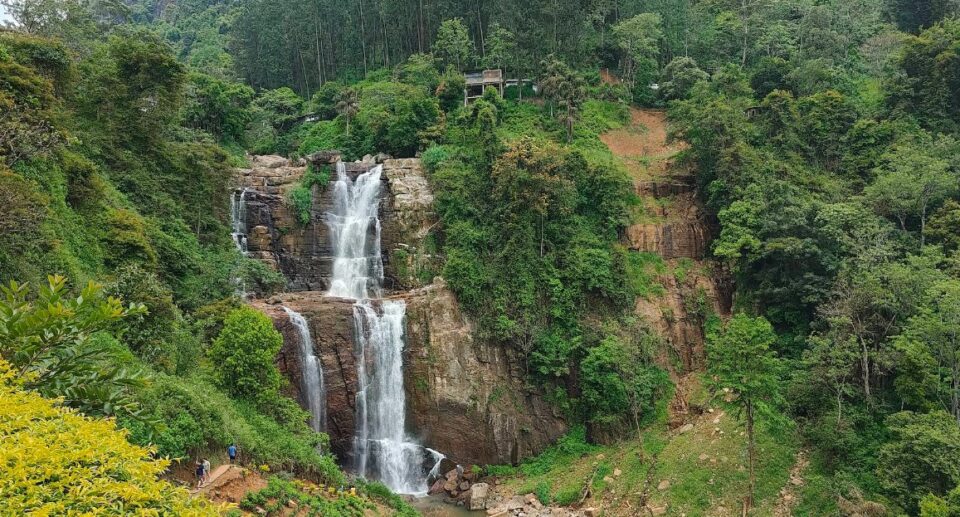
Located in Sri Lanka’s Central Province, Ramboda Falls is among the island’s most impressive waterfalls. With a height of approximately 109 meters (358 feet), it is one of Sri Lanka’s tallest waterfalls and has become a cherished natural symbol among locals and international travelers alike. Located on the busy A5 road between Kandy and Nuwara Eliya, Ramboda Falls provides tourists with a cool respite in the midst of Sri Lanka’s hill country with its rolling hills and cool climate.
This essay delves deeply into Ramboda Falls, analyzing its physical and geographical attributes, cultural and historical importance, places of interest, and the larger environmental setting in which it lies.
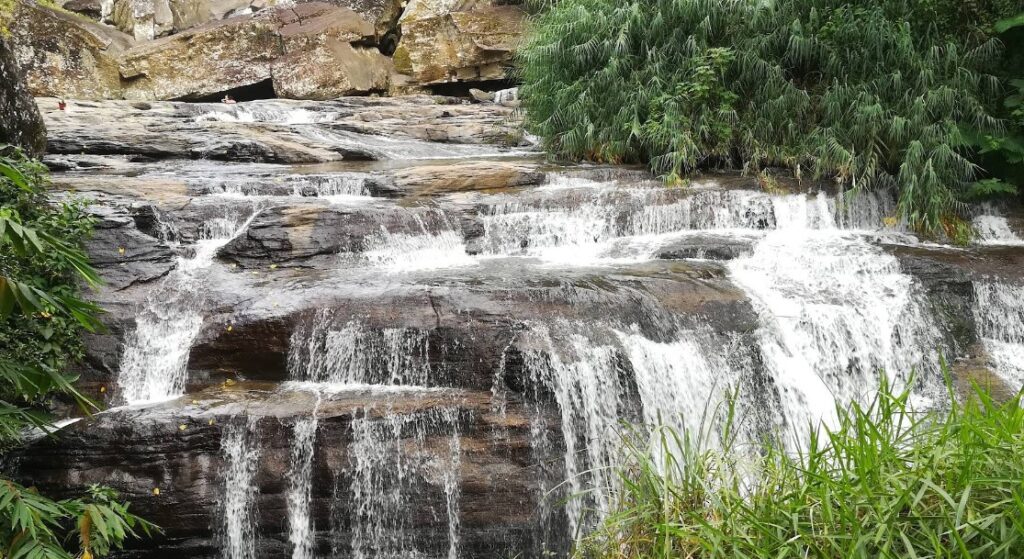
Geographic and Physical Features
Ramboda Falls is formed by the waters of Puna Oya, a tributary river of the larger Kotmale Oya river system. The most dramatic aspect of this waterfall is the Y-shaped plunge, where the water splits into two streams as it plunges over a sheer rock face before coming back together again at the bottom. This two-stream descent creates an captivating visual spectacle and optimizes the waterfall’s beauty.
The waterfall plunges over several cliffs and rocky outcrops which are covered with thick tropical jungles and large tea estates, typical of Sri Lanka’s central highland landscape. The tea estates around it give the venue a rich green backdrop in contrast to the white foamy water, and thus Ramboda Falls is a nature lover’s and picture hunter’s paradise destination.

With height and volume, Ramboda Falls is among Sri Lanka’s top ten highest waterfalls and reported to be the 11th highest. The cool hill country climate combined with perennial year-round flow of water keeps the waterfall in sprits, although when at its peak this is the monsoon seasons.
Historical and Cultural Significance
While Ramboda Falls is primarily valued as a natural attraction, it is also culturally significant within the region. The falls lie near some of the Buddhist temples and shrines, reflecting the religious heritage of the Central Province. Even the name “Ramboda” is derived from the Sinhala words “Ramba” (“beautiful”) and “Dora” (“waterfall” or “stream”), fittingly describing the magical nature of the falls.

The area has been inhabited by villagers and tea plantation workers, who have lived in harmony with nature for generations. Their culture, festivals, and life add cultural enrichment to any visit to Ramboda.
Visiting Ramboda Falls: What to Expect
Tourists to Ramboda Falls can look forward to a combination of natural majesty, accessibility, and scope for discovery. The waterfall is located advantageously directly next to the A5 highway, hence serving as a convenient stopping point for tourists traveling between Nuwara Eliya and Kandy.
Viewpoints and Access
There are several appointed viewpoints and platforms close to the highway with great panoramic views of the waterfall and nearby valleys. These viewpoints are readily accessible and are ideal spots for photography and relaxation.
For those with more adventurous spirits, there is a short trekking path which leads visitors closer to the base of the falls, where one can see the power of the water pounding down up close. The path passes through tea estates and dense forest with the chance to catch sight of local wildlife in the shape of butterflies and birds.
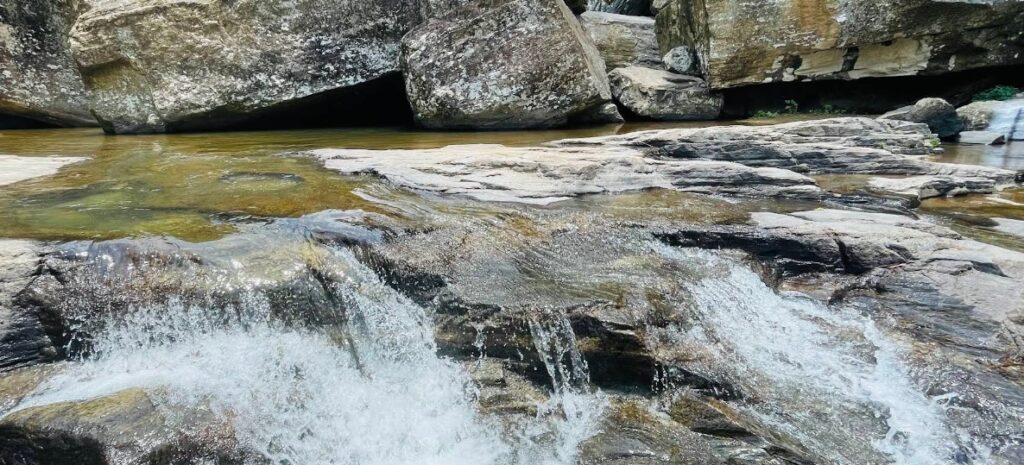
Activities at Ramboda Falls
Photography: The Y-shape, which is a rare occurrence, of the waterfall and dense neighborhood make it quite possibly the most photogenic spot in Sri Lanka’s hill country. It is best seen early morning and late afternoon when the light is optimal.
Nature Walks: Walking along the nearby tea estates and forest trails is a cool experience and a chance to observe the land’s agricultural heritage.
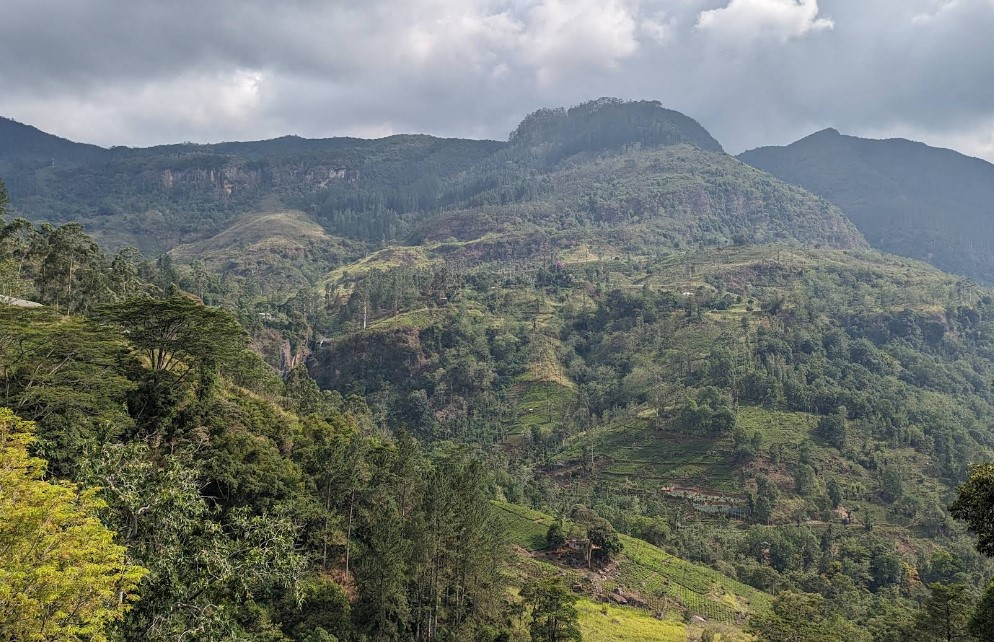
Picnicking: The serene environment surrounding Ramboda Falls makes it an excellent picnic spot, where one can just sit and relax while enjoying the splashing sound of water and cool mist.
Visiting Nearby Places: Ramboda Falls is located close to the Ramboda Tunnel, a marvel of Sri Lankan engineering. The tunnel goes through the hills and enhances the highway view.
Ecology and Environmental Significance
Ramboda Falls sits in a biodiverse region in Sri Lanka. The region holds many endemic flora and fauna species of vegetation. The site plays an important role in the sustenance of local ecosystems, especially as a Kotmale River basin watershed.
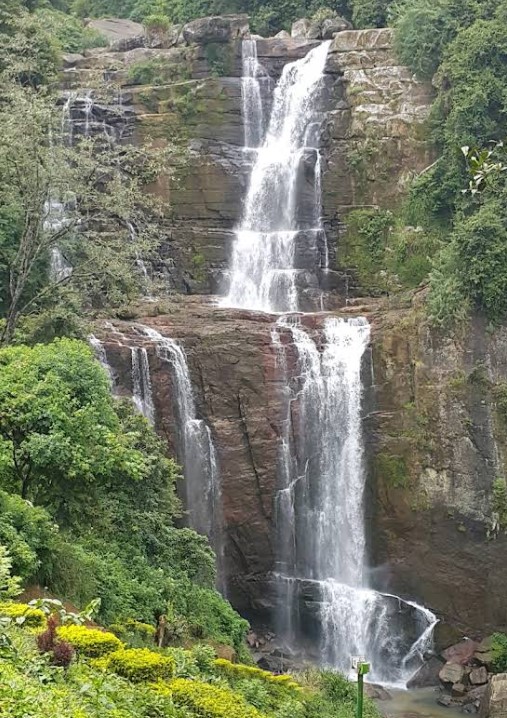
The tea plantations themselves are dotted with patches of forest ecosystem, which house birds, butterflies, and small mammals. Conservation in the region is focussed on balancing farm production and biodiversity protection.
The waterfall itself moderates local humidity and microclimate. The constant mist from the falls maintains mosses, ferns, and other hygrophilous vegetation on the cliffs and rocks around the falls.
Practical Information for Visitors
How to Get There
By Road: Ramboda Falls is accessible along the A5 highway, 25 kilometers from Nuwara Eliya and 70 kilometers from Kandy. Tourists in automobiles or taxis can directly visit the falls for a brief stopover or prolonged tour.
By Road: Regular minibuses and buses ply between Kandy and Nuwara Eliya and can be boarded from central bus terminals. The riders should ask the driver to drop them close to Ramboda Falls or Ramboda Pass.
By Train: The nearest railway station is Nanu Oya, about 20 km from the waterfalls. Taxis and tuk-tuks are easily available on hire from there.
Best Time to Visit
The ideal period to visit Ramboda Falls is the monsoon months, particularly from October to February, when water level is maximum and the falls are most beautiful. But the falls are open throughout the year. It is better to visit in the mornings for photography and to escape the crowds.
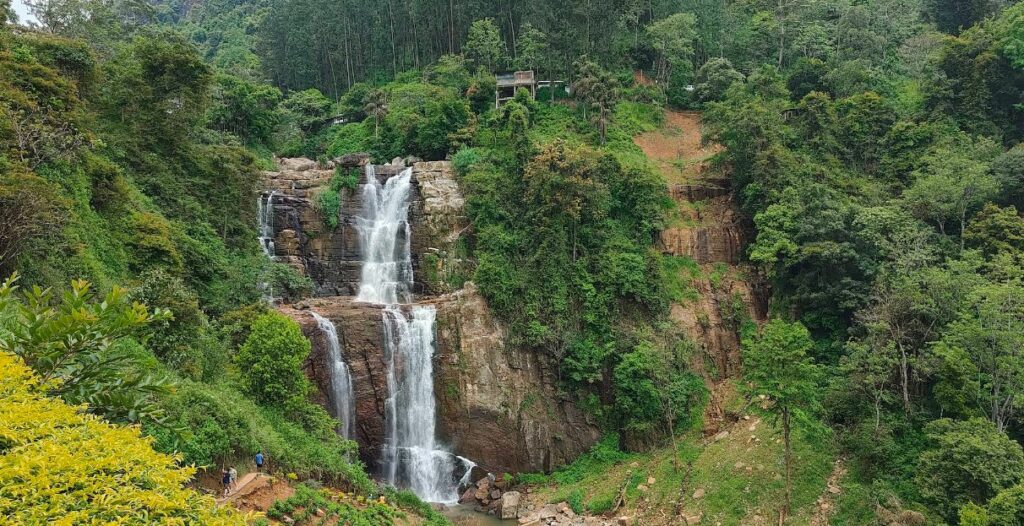
Visitor Tips
Footwear: Wear sturdy footwear suitable for irregular and occasionally slippery surfaces.
Safety: The rocks at the base are slippery; caution is advised when accessing the falls.
Respect Nature: Avoid littering and stay on marked paths to avoid damaging local flora.
Local Guides: A local guide may enhance the experience by providing an insight into natural and cultural heritage of the region.
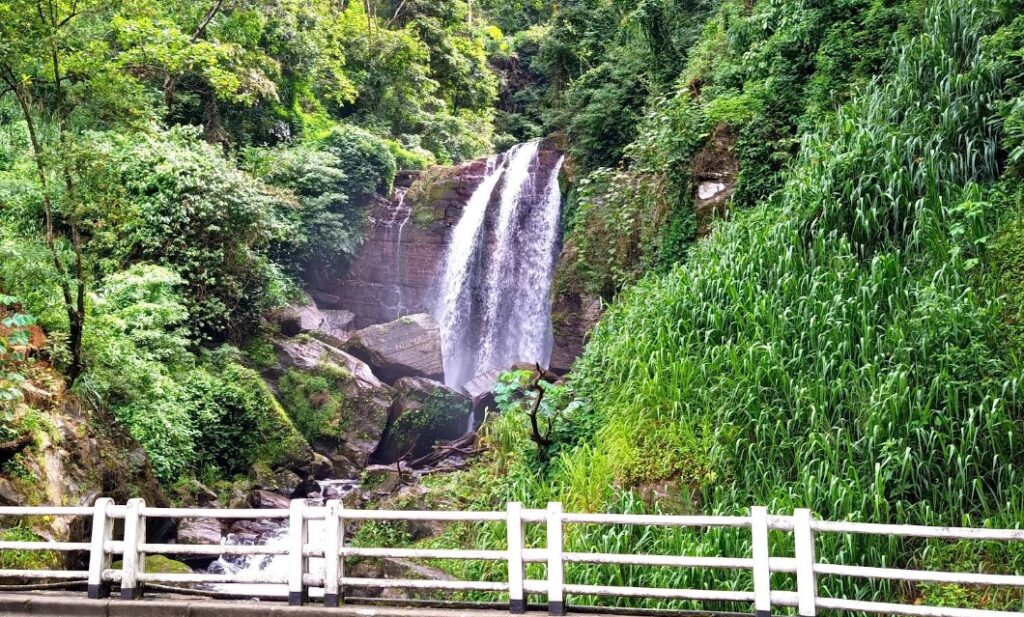
Nearby Attractions
While Ramboda Falls is a gem, there are some attractions nearby that can contribute to the visitor’s itinerary:
Ramboda Tunnel: This engineering wonder is among the longest road tunnels in Sri Lanka and cuts through the hills to give a drive-through experience with wide vistas.
Tea Plantations: Some of the tea plantations in the area open for visits and give an insight into how the tea is being prepared from harvesting to packaging.
Kotmale Reservoir: Just a short drive away, this reservoir is a serene spot for boating and picnics.
Devon Falls: Another scenic waterfall in a one-hour radius, another opportunity to explore Sri Lanka’s waterfalls.
Ramboda Falls is a breathtaking natural attraction in Sri Lanka’s hill region, fascinating travelers with its tallness, unique formation, and vegetation of bordering tea plantations and forests. Its accessibility along a major road renders it an ideal stopping place for travelers venturing into the cultural and scenic richness of Central Sri Lanka.
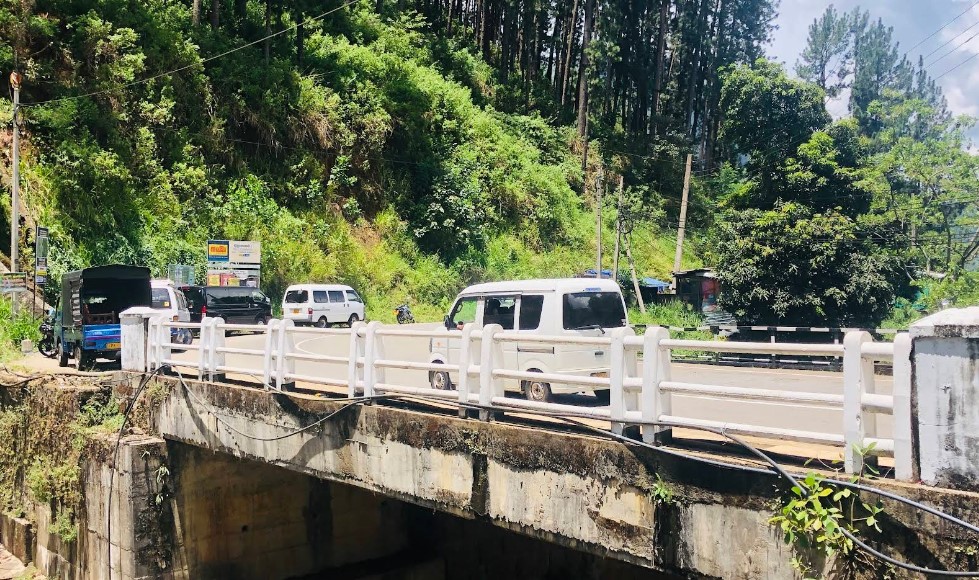
Besides its attractiveness, Ramboda Falls also symbolizes the delicate balance between nature, agriculture, and tourism in the region. With continued conservation and sustainable toursim operations, the waterfall, as well as its surrounding environment, is sure to be in its natural state for future generations to enjoy.
For any visitor to Sri Lanka, indeed for any adventurer in the central highlands, Ramboda Falls is an unmissable experience that provides natural beauty, cultural relevance, and peaceful recreation in one unequalled package.
How to Go to Ramboda Falls
Ramboda Falls is located along the A5 highway, between Kandy and Nuwara Eliya, in Sri Lanka’s Central Province. It’s a popular stop on the scenic route through the hill country.
From Colombo
- By Car/Taxi:
The drive from Colombo to Ramboda Falls is about 115 km and takes roughly 3 to 3.5 hours via the A1 (Colombo-Kandy Road) and then the A5 highway towards Nuwara Eliya.
Route: Colombo → Kandy → Ramboda Falls (on A5 highway)
It’s best to start early to enjoy the scenic views and avoid heavy traffic. - By Bus:
Take a bus from Colombo to Kandy (frequent buses run daily). From Kandy, take another bus heading towards Nuwara Eliya and ask the driver to stop near Ramboda Falls.
The bus stop is close to the waterfall, but you may need to walk a short distance. - By Train:
Take a train from Colombo Fort to Nanu Oya station, the closest station to Nuwara Eliya (around 20 km from Ramboda). From Nanu Oya, hire a taxi or tuk-tuk to reach Ramboda Falls (approximately a 40-minute drive).
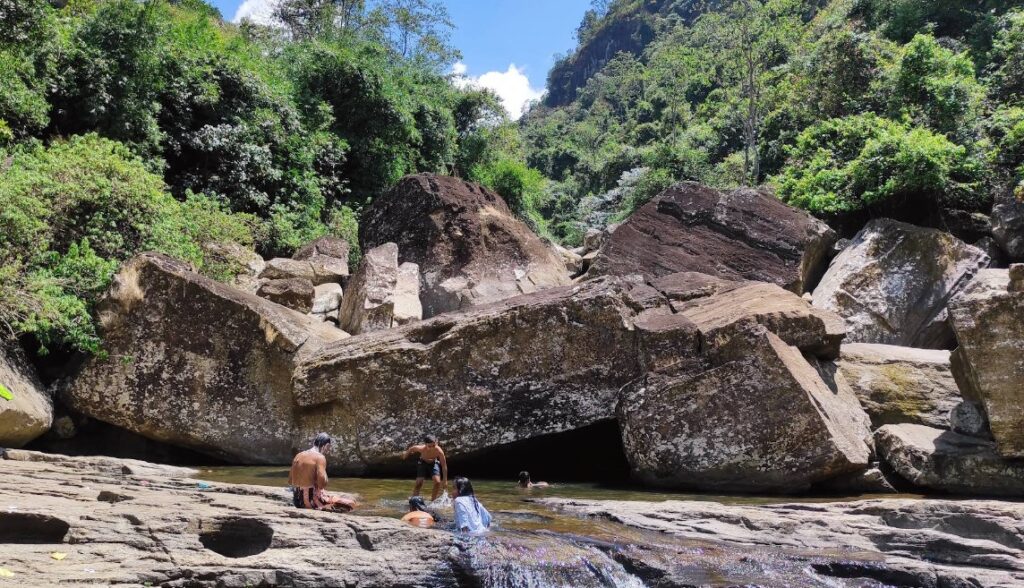
From Kandy
- By Car/Taxi:
Ramboda Falls is about 40 km from Kandy and takes roughly 1.5 hours by car.
Drive south on the A5 highway towards Nuwara Eliya. The waterfall is visible from the road, and there are marked viewpoints and parking areas. - By Bus:
Buses regularly operate from Kandy to Nuwara Eliya and pass near Ramboda Falls. You can get off at the stop near the waterfall. Ask the driver to notify you before the stop.
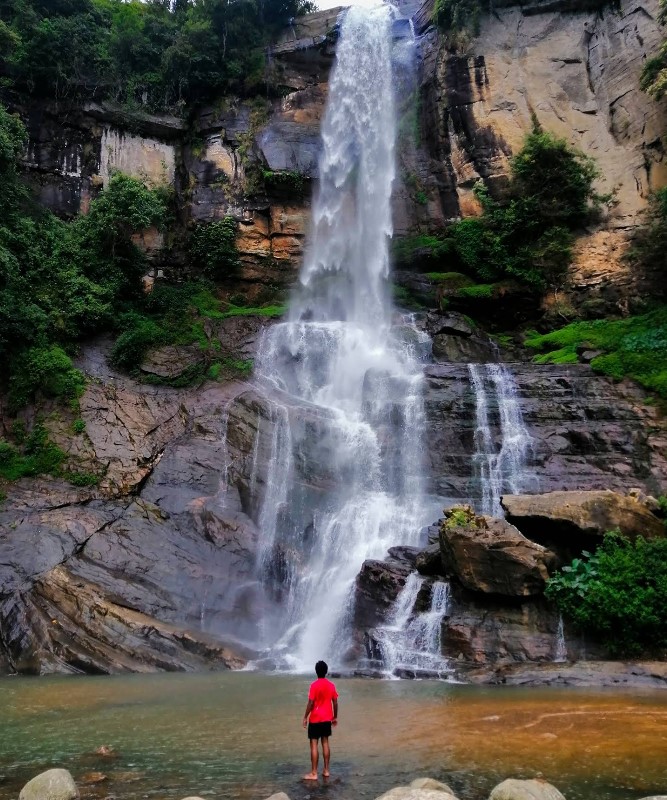
From Nuwara Eliya
- By Car/Taxi:
The distance from Nuwara Eliya to Ramboda Falls is about 25 km, roughly a 45-minute drive along the A5 highway towards Kandy. - By Bus:
Buses traveling from Nuwara Eliya to Kandy also pass Ramboda Falls. You can request the conductor to stop at the waterfall.
Local Transport Around Ramboda Falls
- Tuk-tuks:
From nearby towns or bus stops, tuk-tuks are available for hire to get you closer to the waterfall viewpoint or trailheads. - Walking:
Once you park near the falls, it’s usually a short walk to the viewing platforms or the base of the waterfall.
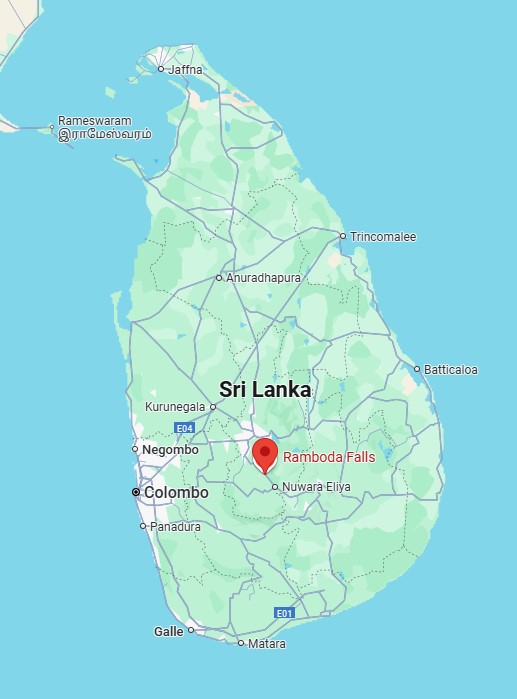
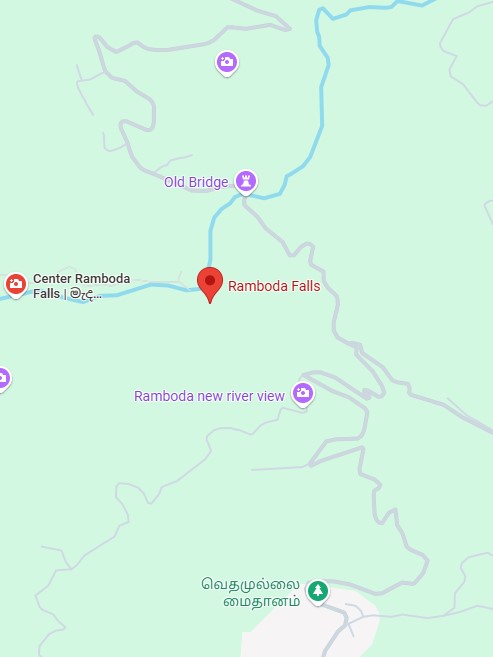





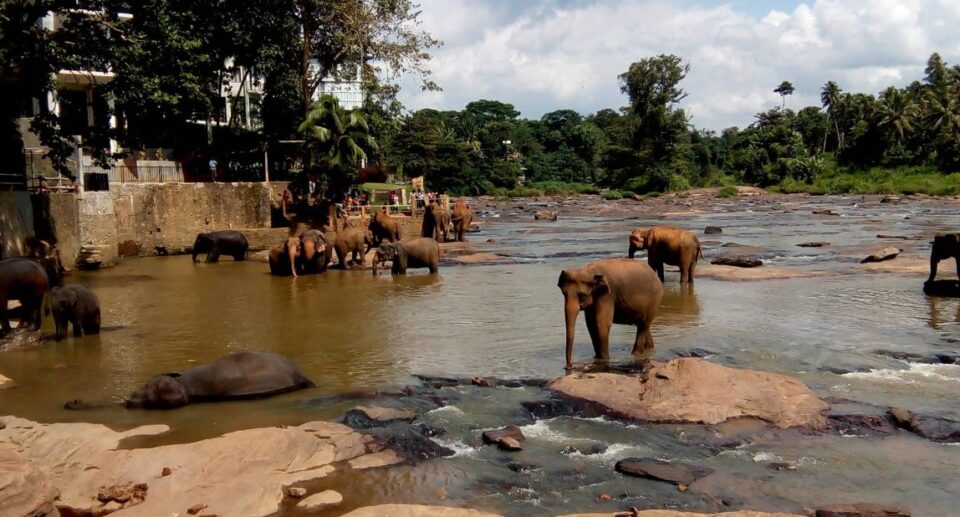

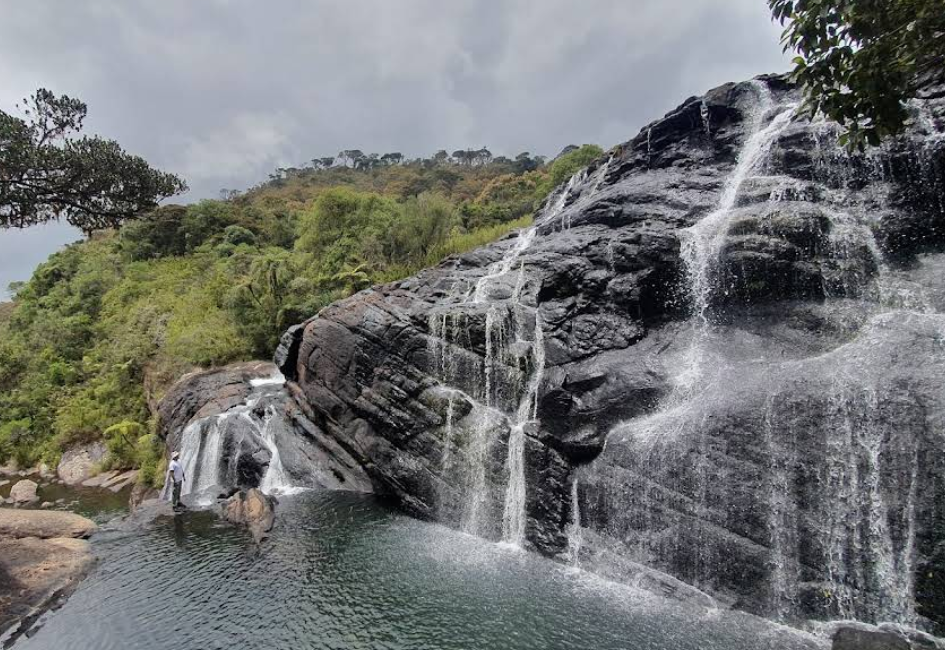

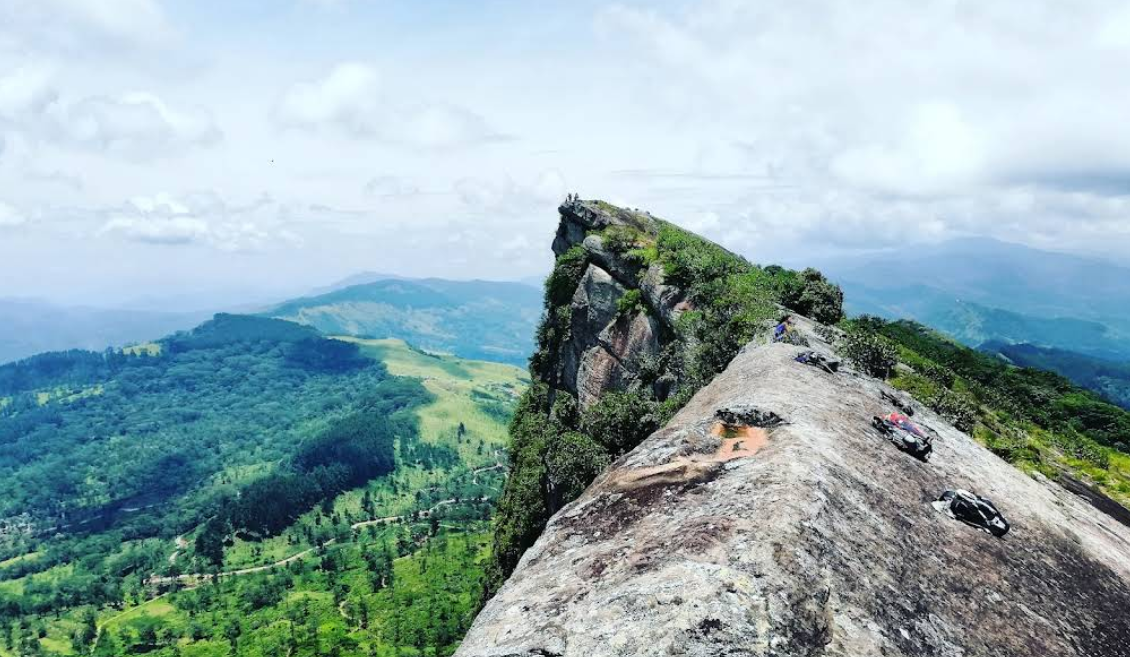
1 Comment
[…] Ramboda Falls: The Majestic Cascade of Sri Lanka’s Hill Country – HiddenVisit […]